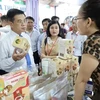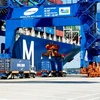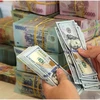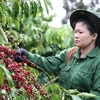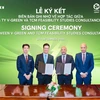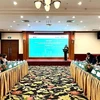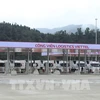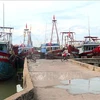Hanoi (VNA) – Nearly 90 percent of tariff lines have been cut and reduced, with 59 percent abolished immediately as the Free Trade Agreement (FTA) between Vietnam and the Eurasian Economic Union (EAEU) has taken effect since October 2016.
It is an advantage for Vietnam when exporting goods to EAEU countries compared to other countries in the world.
The aquatic sector will get the most from the agreement since the EAEU will reduce its import tax, from 10 percent to zero, for aquatic products from Vietnam, including processed ones.
Some of processed and canned products, such as tunas and shrimps, will enjoy preferential tax, but they are groups that Vietnam lacks of materials. Another five percent of tax lines will be applied on other seafood products that are not strength of Vietnam.
Agro-forestry products will get the least benefit. For rice, the EAEU has a set an initial quota of importing 10,000 tonnes of rice per year from Vietnam with zero tax. The above-quota amount will be levied the most-favoured nations (MFN) tax. In addition, Vietnam’s annual rice export volume is dependent on demand of EAEU countries.
The agreement will not reduce taxes for green tea packages weighed under 3 kg. Zero taxes are applied only for raw Vietnamese coffees and peppers while there will be no tax exemption or reduction for the processed products.-VNA

Seminar discusses ways to optimise Vietnam-EAEU FTA
A seminar was held in Ho Chi Minh City on August 19 to discuss measures that domestic enterprises can apply to minimise impacts and optimise benefits from the Vietnam-EAEU FTA.




